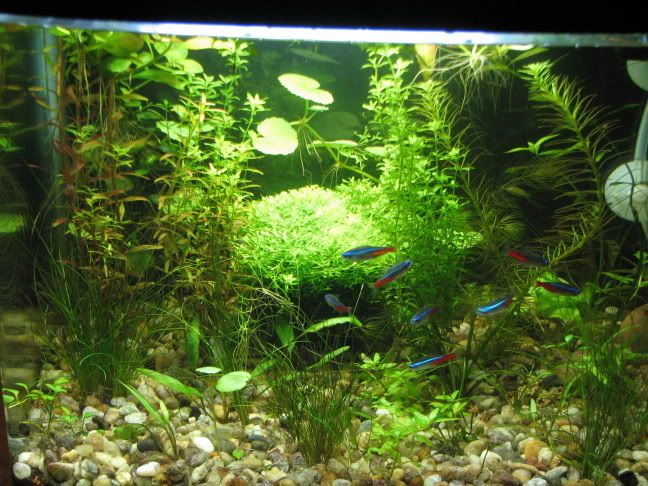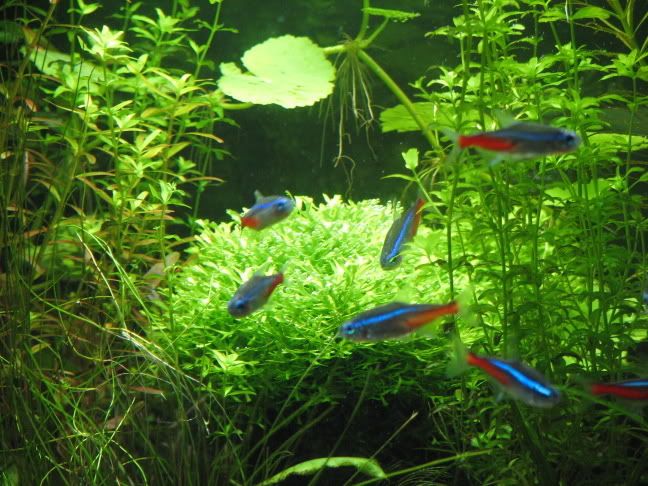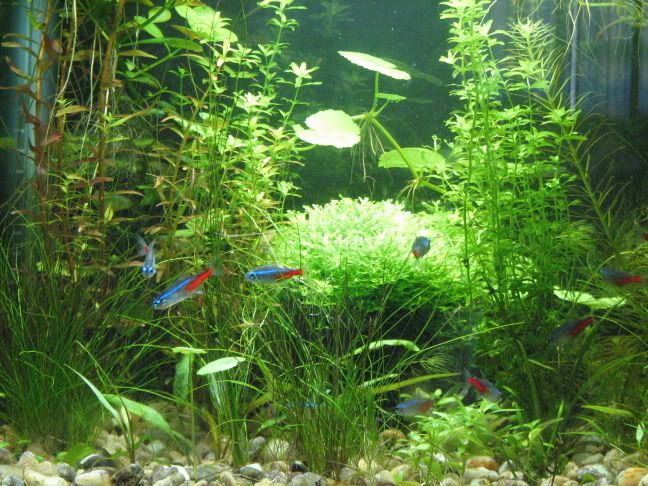Retirement and forum shutdown (17 Jan 2022)
Hi,
John Howell who has managed the forum for years is getting on and wishes to retire from the role of managing it.
Over the years, he has managed the forum through good days and bad days and he has always been fair.
He has managed to bring his passion for fish keeping to the forum and keep it going for so long.
I wish to thank John for his hard work in keeping the forum going.
With John wishing to "retire" from the role of managing the forum and the forum receiving very little traffic, I think we must agree that forum has come to a natural conclusion and it's time to put it to rest.
I am proposing that the forum be made read-only from March 2022 onwards and that no new users or content be created. The website is still registered for several more years, so the content will still be accessible but no new topics or replies will be allowed.
If there is interest from the ITFS or other fish keeping clubs, we may redirect traffic to them or to a Facebook group but will not actively manage it.
I'd like to thank everyone over the years who helped with forum, posted a reply, started a new topic, ask a question and helped a newbie in fish keeping. And thank you to the sponsors who helped us along the away. Hopefully it made the hobby stronger.
I'd especially like to thank John Howell and Valerie Rousseau for all of their contributions, without them the forum would have never been has successful.
Thank you
Darragh Sherwin
NANO TANKS
- Posts: 1420
- Thank you received: 2
Do we consider all the aspects related to these tanks.
Are our choice of fish wrong?
Is there enough choice out there?
Is the advice been given correct?
Mickey Wallace & Cath Woods
Please Log in to join the conversation.
- arabu1973 (. .)
- Offline
- Senior Member
-

- Posts: 316
- Thank you received: 37
\" Fish for small aquariums
If you'd really like another aquarium but you're short of space, don't despair.
Jeremy Gay has some fabulous ideas for small aquariums.
You don’t need lots of space, technology or budget in order to keep fish, and thanks to Mother Nature there is lots
of livestock choice when considering setting up a smaller tank.
When I say small, I mean tanks of 40 l./8.8 gal. and under, and to be fair to the animals that we intend to keep
inside them, that means a maximum adult size of 5cm/2”, as the length of such aquariums will rarely exceed 45cm/18”.
Small tanks don’t have to be boring though, and aquascaping choices can be just as varied as with larger tanks.
I prefer decorating small tanks because it is a lot easier, and water changes are a doddle.
Small tanks don’t even need proper stands, and can be placed in most circumstances on a sturdy piece of furniture instead.
Small tanks are often associated with beginners or with children too, but after a bit of internet surfing and thumbing
through some design books I found that they can look anything but simple.
So, while feeling suitably enthused about small tanks I thought I’d shortlist a few ideas that hopefully will provide
some inspiration.
1 Mini Amano tank
A copy of one the world famous aquarium designers’ planted tanks. Keep the design really simple using plants with small
leaves like Glossostigma, Micrathemum, Riccia and Java moss. Bright lighting and CO2 are essential to this sort of set
up along with one variety of subtly coloured fish and some algae eating shrimp, Cardinia japonica.
2 Shell dwellers
These tiny Tanganyikan cichlids really come into their own in a small tank. They do still require tip top water quality
with a high pH and plenty of oxygen, and shells of course, so add some empty apple or edible snail shells to a sandy
substrate. Stock a small group of Neolamprologus multifasciatus or a pair of Neolamprologus brevis. N.ocellatus can be
a bit boisterous in a very small tank so are best left out.
3 Nano reef
Marine keeping has come a long way and advances in coral husbandry have made this sort of tank possible. Use a powerhead
that turns over the volume at least ten times per hour, blue/white lighting, live rock and if you can fit one, a protein
skimmer. Take your time with this one and only add live animals when the water is perfect. Add some small goby species or
no fish at all.
4 Siamese fighter
A small, specially set up tank is the best way to keep Betta splendens. Set the temperature high at around 29°C/85°F and
use very gentle filtration as they don’t like water flow. Décor can be sparse, using the fish as the main focus, or
heavily planted with Java fern, Java moss, bogwood pieces and cut sections of bamboo cane. To really make your fighter
feel at home, use soft water.
5 Killifish
Naturally adapted to living in small bodies of water, killifish are suitable inhabitants of small tanks and many have
stunning colouration. Not all are ‘annuals’, and a good introductory species is the Steel blue Aphyosemion gardneri
gardneri. Add live plants in the form of feathery Cabomba and floating plants over a sandy substrate. If you want to
breed them, add a tray of peat, set the temperature to 20-25°C/68-77°F and obtain a pH of 6-7.
6 Cool water alternative
Much more suited to small tanks than goldfish, sub tropical species from Asia are a great alternative. Go for a stream
set up, with large gravel, pebbles, sparse planting and odd bits of driftwood. Filter with an internal power filter,
and stock White Cloud Mountain minnows, danios and Borneo suckers.
7 Crab tank
Set up a tank specially for Red crabs, and only half fill it so that they won’t drown. Use a simple rock pile to provide
a terrestrial refuge and place food on top so that it won’t foul the water. Any filtration will do, backed up by frequent
water changes. Don’t add any fish as they may be attacked and eaten, and you get to keep crabs and fish in the same house,
only in separate tanks...
8 Dwarf frogs
Like the crabs, dwarf frogs, Hymenochirus boettgeri are far better off in their own tank, and away from fish. Set the tank
up like a still water section of a tropical pond. They look particularly good over a soil substrate with bulb plants like
Aponogeton and small floating plants. They don’t need a dry refuge and can be kept in groups as well (see pages 44-46 for
more information on aquatic frogs).
9 Rice fish
One of my all time favourite fish species, and the first fish that I ever bred, Rice fish are perfect for small tanks and
make great, educational breeding projects. Use a small air powered sponge filter and liberally plant with fine leaved
plants and Java moss, within which the females place their eggs. The fry can even be raised alongside the adults in the
same tank. Choose Oryzias melanostigma for tropical tanks and Oryzias latipes for coldwater.
10 The tiny tank
Keep some of the smallest representatives of their genus in a small community tank. Mix Pygmy rasbora, Boraras maculatus
and Sparkling gourami, Trichopsis pumila with Pygmy corydoras, Corydoras hasbrosus, hastatus or pygmaeus and Midget sucker
catfish, Otocinclus affinis. Keep water parameters around neutral and decorate with a fine substrate and small, delicate
aquatic plants.
11 The “Tropicopy”
Create your own version of the Tropica cube and for a fraction of the price. Get a small, glass aquarium and a halogen
desk lamp. Keep plants only with no filtration or heating and optional CO2, or add a tiny heater and filter and stock
it with a few tetras and some shrimp.
12 Endler’s
These hardy little livebearers, similar in appearance to wild guppies, are an excellent choice for the smaller tank. They
are unfussy with regard to pH and are quite temperature tolerant too, with any temperature from 20-28°C/68-82°F being
tolerated. Provide lots of refuges for the abundant fry in the form of feathery leaved and floating plants.
13 Brackish
Nothing is beyond the reach of the small tank and there are brackish representatives too. Decorate either with coral
sand, tufa and shells to simulate a marine environment or use silver sand, driftwood and silk artificial plants to
create a pseudo mangrove environment. Add Bumblebee gobies, Brachygobius xanthozonus and Malayan halfbeaks, Dermogenys
pusilla. These delicate halfbeaks can top the 5cm/2” mark but are lost in larger tanks with boisterous fish. Use marine
salt set to a specific gravity of 1.005 – 1.010.
14 Chocolate gourami
These acid water fish need lots of attention and will do well when kept under a close eye in a small tank. Use RO water
and filter through peat to achieve a very low pH of 4-5. Use air powered filtration and feed lots of live foods. Plants
won’t survive so add a few beech leaves for effect. Test regularly with a pH pen.
15 Badis
Another South East Asian species that needs special care. Use a sandy substrate with live plants and caves made from
flowerpots or coconut shells. Decorate heavily with bogwood or bamboo canes so that there are lots of hiding places
and places for individual Badis to call home. Live foods are essential.
16 Dwarf rainbows
Not the praecox dwarf rainbows, but smaller still with representatives from Pseudomugil and Iriatherina. Use bright
lighting and CO2 in order to grow hairgrass and Riccia fluitans. Quartz sand will look clean and bright in this pretty,
subtly coloured tank.
17 Apistogramma
See these Amazonian dwarfs at their best in a tank set up specially for them. To be biotope correct, sprinkle leaves
and bogwood pieces over a substrate of fine silver sand. Use soft water with little or no plants and gentle filtration.
Small tetras can be added as dither fish.
18 Lampeyes
This little fish can look stunning in subtly lit aquariums. Aplocheilichthys normani are appealing enough to be kept on
their own and look great in front of the African fern, Bolbitis heudilottii. Keep pH values around neutral and site the
tank quite high up to take full advantage of the reflective blue colouration of their eyes.
19 Mini puffers
Carinotetraodon travanicoricus – a small puffer with a big name, the Pygmy or Malabar puffer is perfect for the small
aquarium as it only grows to 2.5cm/1” in length. Choice of décor can be varied for these active little fish can vary
from a sand or gravel bottom with no plants or artificial plants. Fit an internal power filter.
20 Paradise fish
Paradise fish, Macropodus opercularis have character, can be kept in cold water and are similar to, but much hardier
than Siamese fighters. Keep them at room temperature in a heavily planted tank with only one male per tank. Fit a tight
lid and feed them on pest snails from your other aquaria. They can break the 2”/5cm mark but rarely do, making them
suitable.
This article was first published in the May 2006 issue of Practical Fishkeeping magazine. Copyright © Practical Fishkeeping \"
Please Log in to join the conversation.
- platty252 (Darren Dalton)
-

- Offline
- Moderator
-

- Posts: 2309
- Thank you received: 127
All the equipment like heaters, filters, lights are avalible so these shouldn't be the problem.
The biggest problem is stocking and maintenance.
The smallest tank i have at the moment is about 3L. This gets about a 10% water change daily. This is verry important in small tanks since waste builds up quickly. I use a simple air driven filter that i clean every month or so. After that there is no maintenance and can be enjoyed as much as a large tank.
Stocking a Nano tank needs research. Not all small fish are suited for small tanks. Some fish need space to dart around or room to avoid other fish. Goldfish are a definite no no. They need space and produce a hell of a lot of waste.
If the research is done you will find a whole new world of fish that are suited.
Here is an example of a 40L tank.
Top; 1 clown killi.
Mid water; 6-8 phoenix rasbora.
Bottom; 1 pit bull pleco (LDA-25).
You could also add some shrimp to scavenge any left over food.
This is only an example. There are plenty of small fish suited to Nano's once you do your homework.
Please Log in to join the conversation.
- niko001 (Noel Cutajar)
- Offline
- Junior Member
-

- Posts: 110
- Thank you received: 0
Please Log in to join the conversation.




